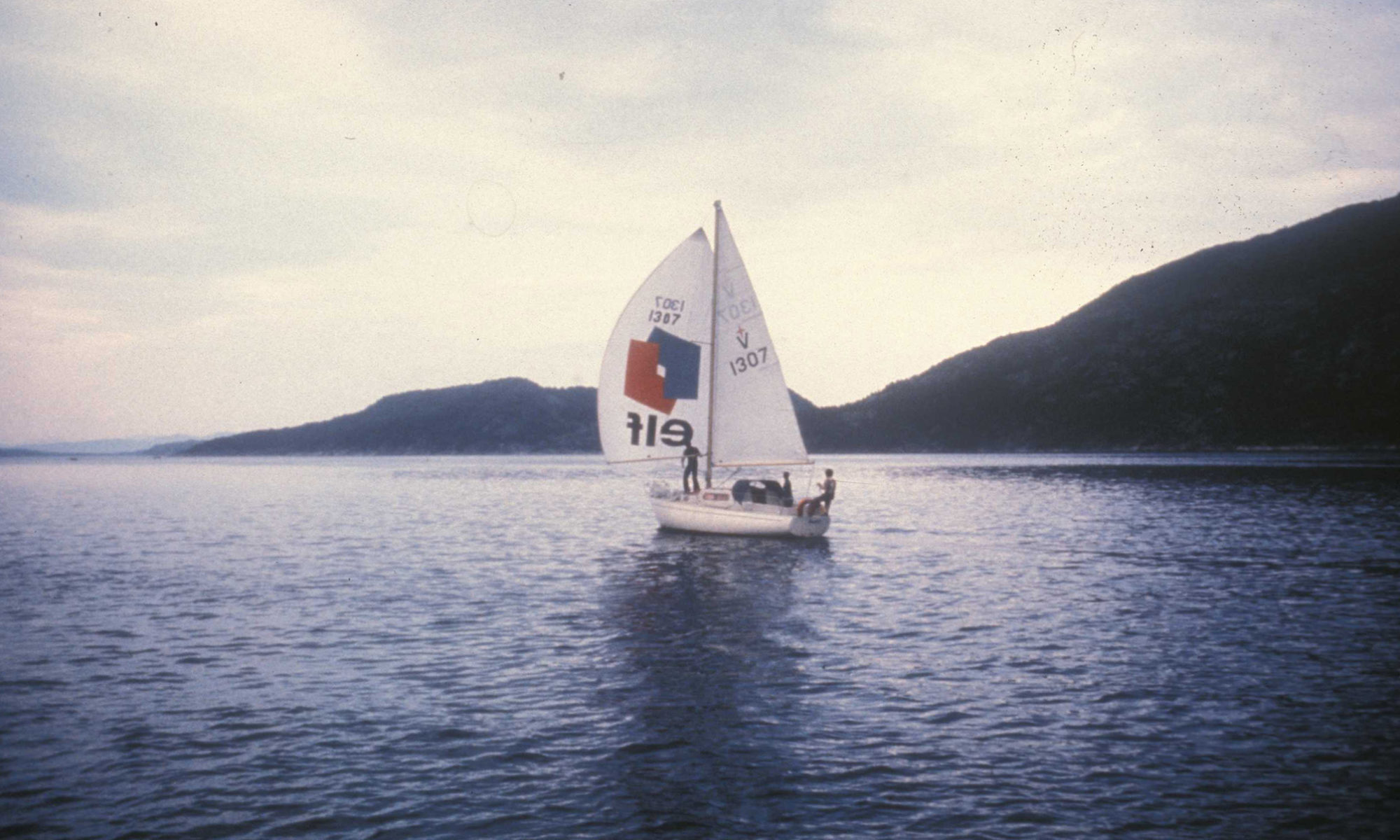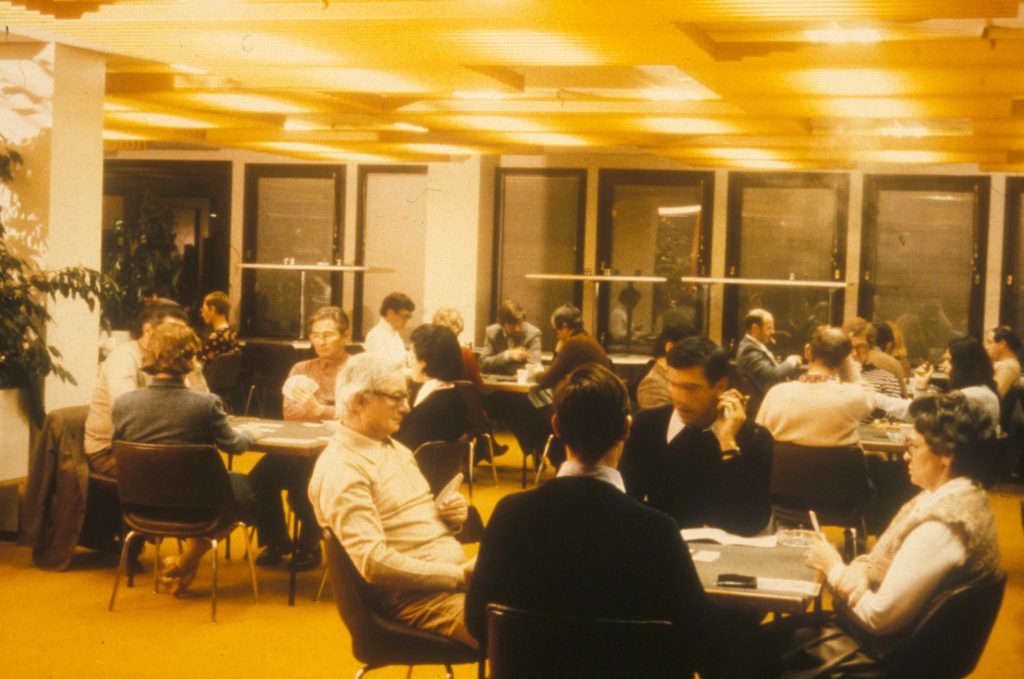The club system

This was a good way to bring the French and Norwegians together, and the club functioned as a bridgebuilder between nationalities.
The club system was brought by Elf from France, where companies were required to allocate a certain percentage of their payroll budget to social purposes through the “Comité d’Entreprise” (usually translated as works council). Headed by managing director Paul le Rest, the French in the company took the initiative in the spring of 1974 to establish this system in Norway on a more formal basis.

Created in January 1975, the Elf Norge Club was to support and promote social leisure activities for employees and their families, forge stronger links between personnel and the company, and build a good working environment. This move was well received, and virtually all employees belonged to one or more clubs by the end of the 1980s. The most popular were the holiday cottage, art, tennis, sports, riding and boat clubs. This system helped to create the distinctive Elf culture, and was so successful that other companies copied it.
Some clubs had the character of holiday societies which appealed to specific families. That applied, for instance, to the Elf Norge Boat Club. According to the statutes, its object was to encourage members and their families to participate in and learn to enjoy sailing, life afloat and associated activities. Membership was free, but a small fee was charged for using the boats. Various types of craft were acquired – motorboats, lifeboats, yachts and so forth. The club also organised navigation courses.

For its part, the Elf Windsurfing Club possessed both boards and wetsuits. Another holiday club was the Elf Norge Cottage Club, which leased three cabins in Stjernarøy north of Stavanger for use by members. These were maintained by volunteers. Cabins were also acquired at Sinnes in Sirdal. The Elf Caravan Club worked to promote interest in caravan holidays in the broadest sense, and helped members to secure equipment and suitable camp sites. Caravans were purchased, and the club had a site in Sirdal.
Sports clubs were another category, with associations for both team games and individual activities. The Elf Norge Football Club was very active, with a number of teams drawn from company employees and their families. These played in several company football tournaments. The Elf Handball Club was also active in such competitions.
The Elf Tennis Club collaborated with the Stavanger Tennis Club and used its premises. Until the end of 1975, it was able to borrow a corner of the Siddishallen indoor court for a few hours a week. New indoor courts opened at Gamlingen in Stavanger in 1976 and improved the position. These buildings were erected with financial help from Elf. The Elf Norge Table Tennis Club also embraced other sports which did not have their own Elf association, and was based in the bomb-proof cellar of the main building in Dusavik.
Located at the Stavanger Golf Club’s courses on Stokka Lake, the Elf Aquitaine Golf Club possessed several sets of clubs and organised free instruction.
Members of the Elf Bridge Club also met in Dusavik, the Elf Orienteering Club arranged races, and the Elf Ski Club organised weekend outings for both Nordic and Alpine disciplines with equipment for hire at low rates. The Elf Norge Riding Club was one of the biggest in the company, and collaborated with the Stavanger Riding Club at Gimle Farm near the golf course. The club owned a number of horses, including Lady Elf, Delfin, Elf Galvin, Gawin and Miss Elfana, as well as two Iceland ponies – Peer and Paal. Full scuba sets and a Zodiac inflatable boat were available in the Elf Norge Diving Club.



The Elf Norge Cannon Club – officially the Elf Hunting, Shooting & Fishing Club - provided target-shooting rifles and pistols. A miniature rifle range was installed in the cellar of the main building. For hunting, Elf had a duck-shooting area in Sandnes and a terrain for small game in Sand. A small powered plastic-hulled boat and a rifle for big-game hunting were available. Opportunities also existed for hiring more extensive hunting grounds. Where fishing was concerned, the club had sites on the Årdal and Ogna rivers.

A fully-equipped darkroom for developing black-and-white photographs was provided by the Elf Norge Photo Club at Eiganesveien 21. Equipment for developing colour pictures was eventually also acquired. The chemicals for black-and-white photos were free, and members only had to bring their own paper.
The Elf Motor Club’s object was to act as a service for employees by offering spare parts and other accessories at reduced rates. Courses, car testing, competitions and so forth were organised, together with safety and first-aid teaching.
Artwork lotteries were held by the Elf Art Club, while the Elf Music Club had a library of records and tapes which members could borrow cheaply. Music courses were held for those who wanted to learn to play an instrument. Professional teachers could be hired. The club had an orchestra and bands for all its members.

Sprunki Incredibox adds a fresh twist to the beloved music-mixing format with new beats and visuals. A must-try for fans! Check out the Sprunki Christmas Game for more holiday fun.
Sprunki Incredibox is a brilliant twist on the original, adding fresh beats and visuals that elevate the music-mixing experience. If you’re into creative games, check out their Car Games too – they’re just as inventive!
Slots are so engaging – the variety keeps things fresh! Seeing platforms like JiliVS prioritizing quick registration & easy deposits (like GCash!) is a huge plus. Check out the jilivs app download for a seamless experience – RTP & volatility filters sound great for finding your perfect game!
Interesting read! Seeing more platforms like Sugal777 expand access to online gaming is a big shift. Easy registration via sugal777 legit seems key for new players – security is vital, of course! Solid analysis here.
It’s interesting how online gaming is evolving! Seeing platforms like funbingo ph online casino cater specifically to local players with things like Filipino support is a smart move. Responsible gaming is key, too – good to see that prioritized! 🤔